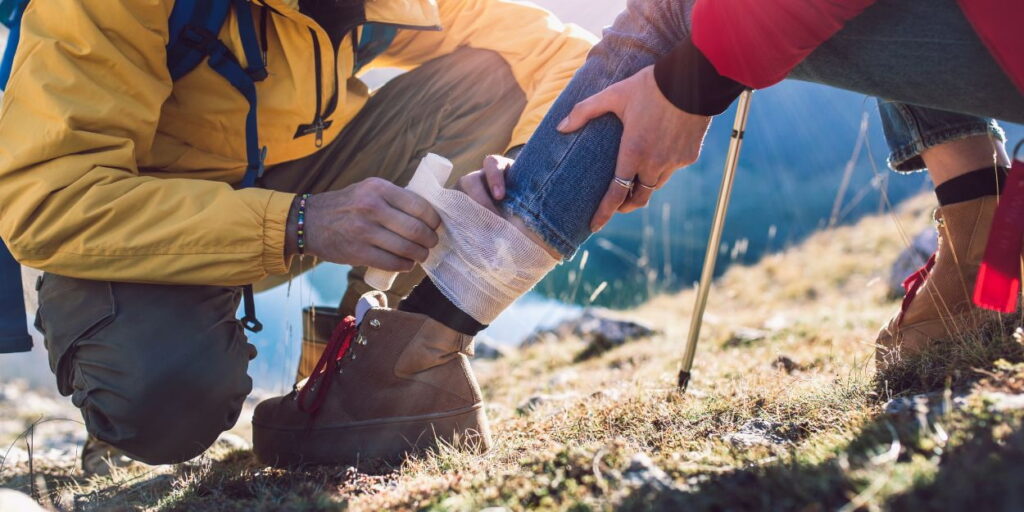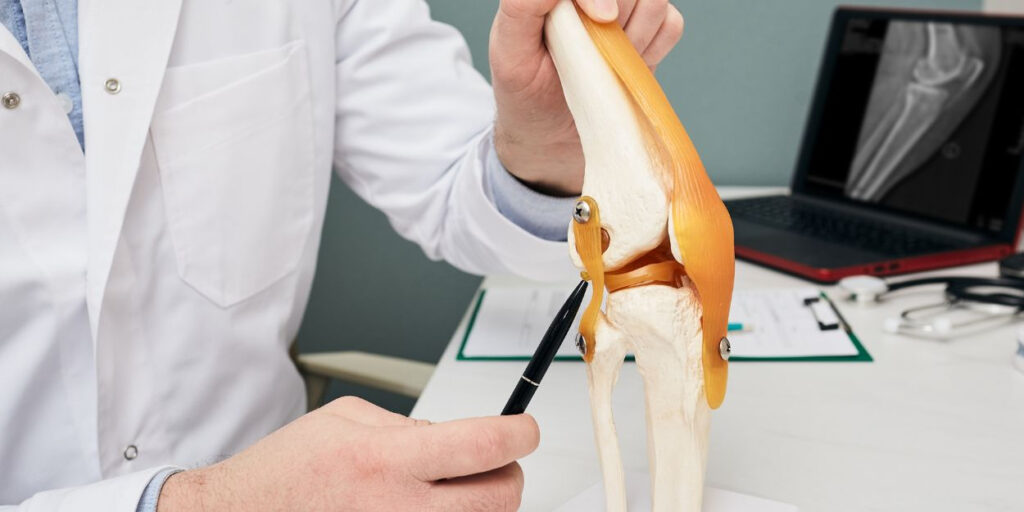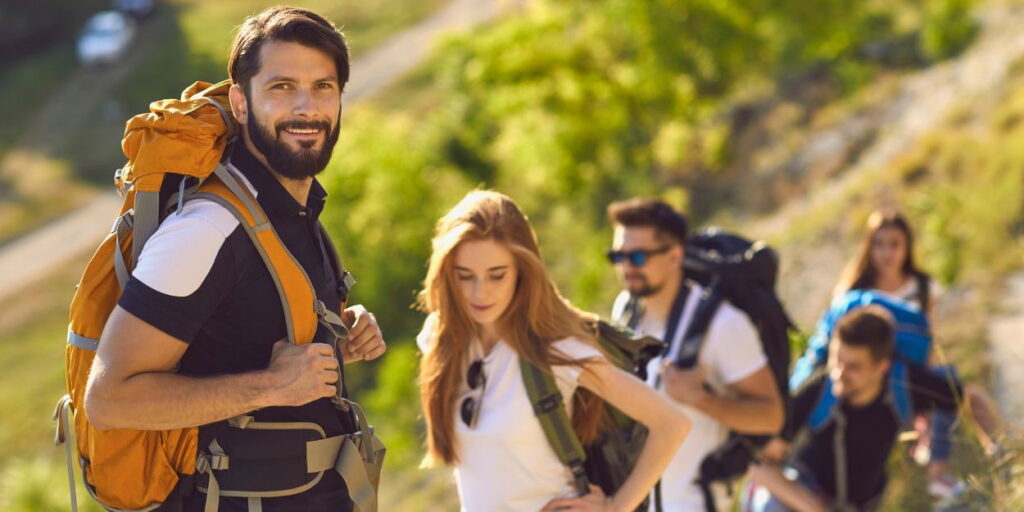Are you an adventurous soul who loves nothing more than climbing the peaks and exploring nature’s wonders on foot? Surely, hiking serves as a popular source of getaway from the hustle and bustle of daily life.
In fact, many people just do that to connect with nature. The views are well worth your time and investment.
However, injuries are an inevitable part of the game, especially if you’re going uphill for the first time. Sore muscles, blistered feet, and aching joints can all conspire to halt your outdoor exploration.
For that reason, we’ve put together the ultimate guide to treating hiking injuries, so you can get back on your feet and reclaim the trail.
So without further ado, let’s get started!
Understanding Hiking Injuries
Do you know that 5000 people get injured each year due to hiking in the US? With that being said, you must have a thorough understanding of common hiking injuries in order to ensure safety while hitting the trails.
Common hiking injuries
Injuries can vary in nature and severity, ranging from minor scrapes and blisters to more serious conditions. One of the most common injuries in hiking is the dreaded ankle sprain. The uneven terrain and rugged paths can cause missteps, leading to sprains, strains, and even fractures.
Hikers may also experience knee pain, especially when navigating steep descents or carrying heavy backpacks. The repetitive stress on the knee joints can result in conditions like patellofemoral pain syndrome or iliotibial band syndrome.
In addition, blisters, abrasions, and cuts are frequent nuisances due to prolonged friction and contact with rough surfaces. These fluid-filled sacs can make each step a challenge, and if left untreated, they may become prone to infection.
Causes of Hiking Injuries
It’s paramount to know the causes behind common injuries in hiking, as it can help minimize the risks.
Here are a few major causes of hiking injuries:
- An Inadequate Warm-up: Failing to stretch up before hitting the trail can strain muscles and lead to painful injuries.
- Inappropriate Wear: The right gear can be a major decider between a pleasant hike and a disaster. Ill-fitting shoes and uncomfortable clothing can cause blisters, sprains, and other injuries.
- Uneven Terrain: Trips, falls, and twisted ankles can result from navigating uneven surfaces, slippery rocks, or loose gravel.
- Overexertion: Pushing your physical limits without proper rest and hydration can lead to exhaustion, muscle cramps, and fatigue-related injuries.
Importance of Immediate Treatment
When faced with a hiking injury, immediate treatment can significantly impact the healing process and overall recovery. Ignoring or delaying treatment can exacerbate the injury, prolong discomfort, and potentially lead to long-term complications.
Here are a few reasons why swift treatment is essential for hiking injuries:
- Ensures quick relief against pain and discomfort
- Prevents further complications like open-wound infections
- Speeds up the healing process
- Minimizes the risk of long-term consequences like scar tissue formation
- Facilitates quicker return to hiking activities
- Reduces the need for more extensive medical intervention
First Aid for Hiking Injuries

No doubt, a hiking trip is a great way to absorb the peace of nature and escape from the chaos of the modern world. However, the same mother nature can be fickle and may bring injuries in your way. Therefore, it’s crucial to equip yourself with a well-stocked first aid kit.
1. The Basics
To start off, here are some fundamental items that should be included in every hiking first aid kit:
- Adhesive bandages
- Sterile gauze pads and tape
- Antiseptic wipes or solution
- Disposable gloves
- Tweezers, safety pins, and scissors
- Dental wax
2. Medications & Creams
When you’re out on the trail, it’s wise to have a few medications and creams on hand to address common ailments:
- Over-the-counter pain reliever (ibuprofen)
- Antihistamines and antibiotics
- Hydrocortisone cream
- Tetanus shot
3. Additional Supplies
In order to round out your hiking first aid kit, consider including the following items:
- Moleskin or blister pads
- Instant cold packs
- Elastic bandages
- Emergency blanket
- Raincoat or umbrella
First Aid Treatment:
On the local scale, the major first aid for common hiking injuries involves the RICE (Rest, Ice, Compression, Elevation) method. Resting the injured body part allows for initial recovery while applying ice helps relieve pain. Meanwhile, the compression bandage, along with elevation, drains excess fluid and reduces inflammation.
Natural Remedies for Hiking Injuries

On a hiking venture, a professional medical unit isn’t necessarily available. In that case, natural remedies can indeed help against minor injuries.
One particular demonstration is Arnica, a potent herb that you can apply topically to reduce swelling and bruising. Comfrey, on the other hand, can be used in salves or ointments to speed up the healing of sprains and strains, thanks to its soothing properties.
Moving forward, essential oils such as lavender and peppermint can provide relief for sore muscles and joints when massaged gently.
Seeking Professional Treatment

In certain instances, common injuries in hiking may necessitate professional medical intervention. These include situations such as fractures, severe sprains, deep cuts or wounds, severe allergic reactions, and persistent pain.
Professional care brings expertise, experience, and access to a wide range of treatments that can expedite recovery. Among the common approaches, physical therapy is an integral treatment for injuries from hiking. A physical therapist aims to facilitate a safe yet complete recovery by promoting overall musculoskeletal health.
Moreover, the health personnel will examine your condition and prescribe painkillers, otc medicines, or antibiotics. The unit may also give you a tetanus shot, depending on the nature of your injury.
Preventing Hiking Injuries

With regard to hiking, an ounce of prevention is worth a pound of cure. Hence, it’s imperative to take precautionary measures before hopping on a trip. The major ones include:
- Maintain good physical fitness through regular exercise.
- Choose appropriate footwear and gear for ankle support and comfort.
- Warm up and stretch before starting the hike to prevent strains and sprains.
- Stay aware of trail conditions, hazards, and changes in weather.
- Stay hydrated and consume nutritious snacks to maintain energy levels.
- Know your limits and gradually progress in intensity and duration.
- Take regular breaks and rest to avoid overexertion.
Conclusion
To wrap it all up, hiking injuries are an unfortunate but manageable aspect of exploring the great outdoors. They require a proactive approach and a sound knowledge of basic first aid.
However, despite the best precautions, injuries can still occur while on outdoor ventures, including hiking and skiing. In that case, one should promptly visit the nearest urgent care clinic.
After reading this guide, you have gained valuable insights into common injuries and how to treat them. So don’t wait; hit the trail with confidence.
Hiking Injury FAQs
What is the most common injury when hiking?
One of the most common hiking injuries is a sprained ankle. Hiking often involves traversing uneven terrain, encountering loose rocks, or experiencing missteps, which can cause the ankle to twist and result in sprains.
What happens to your body after hiking?
After hiking, several things can happen to your body. You may experience muscle soreness, fatigue, and dehydration due to the physical exertion involved in hiking.
How do you prevent injuries when hiking?
There are several ways to prevent injuries while hiking. For instance, you can wear appropriate footwear, utilize trekking poles for stability, have plenty of water, and warm up before starting. Knowing the common injuries and how to treat them can help you in early care.



